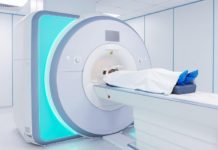Bayer AG announced that new real-world data from multiple countries on its oral Factor Xa inhibitor Xarelto® (rivaroxaban) in patients with non-valvular atrial fibrillation (AF) were presented at ESC Congress 2016.
Data from XAPASS – a prospective observational post-authorisation study, which enrolled more than 11,000 patients in Japan – confirmed low rates of both stroke and major bleeding in patients with non-valvular AF newly-initiated on rivaroxaban in routine clinical practice. These results were generally consistent with the Phase III J-ROCKET AF randomised clinical trial. Additionally, real-world insights from National Registers of a total of 57,498 patients in Sweden showed similar rates of major bleeding among patients treated with rivaroxaban and warfarin, but significantly lower rates of intracranial bleeding among patients treated with rivaroxaban.
Data seen from XAPASS to-date reaffirm the positive benefit-risk profile of rivaroxaban that was first established in the Phase III clinical trials ROCKET AF and J-ROCKET AF. In J-ROCKET AF a non-significant 51% reduction in the risk of stroke and non-CNS systemic embolism was observed with rivaroxaban vs. warfarin. While no significant differences in overall bleeding rates were observed in J-ROCKET AF, rivaroxaban use was associated with a non-significant lower major bleeding rate and a slightly higher non-major clinically relevant bleeding rate than warfarin. Patients in J-ROCKET AF had a moderate-to-high risk profile with a mean CHADS2 score of 3.25, whereas patients studied in XAPASS had a lower average risk of stroke, with a mean CHADS2 score of 2.2. In XAPASS, the incidence of any bleeding event was 4.84 per 100 patient-years, of which the incidence of major bleeding was 1.02 per 100 patient-years and the incidence of intracranial haemorrhage was 0.43 per 100 patient-years. The incidence of the composite endpoint of stroke, systemic embolism, or myocardial infarction was 1.35 per 100 patient-years, while the incidence of ischemic stroke was 0.90 per 100 patient-years. These findings were generally consistent with the findings from J-ROCKET AF.
Additionally, real-world insights from National Swedish Registers compared the incidence rate of major bleeding with rivaroxaban and warfarin in patients with non-valvular AF. Results showed similar rates of major bleeding with rivaroxaban and warfarin (3.40 vs. 3.32 bleeds per 100 patient-years, respectively; HR 0.89; 95% CI 0.73-1.10). However, rates of intracranial bleeding were significantly lower with rivaroxaban compared with warfarin (0.62 vs. 0.88 bleeds per 100 patient-years, respectively; HR 0.63; 95% CI 0.40-0.99).
Furthermore, updated results from the REVISIT-US study, a retrospective claims database analysis performed using U.S. MarketScan claims data, were also presented at ESC Congress 2016. This study assessed the real-world effectiveness and safety of newly initiated rivaroxaban, apixaban or dabigatran, each in comparison with warfarin, in patients with non-valvular AF. Results from REVISIT-US were initially presented at this year’s congress of the European Cardiac Arrhythmia Society (ECAS) and in this real-world setting showed that rivaroxaban was seen to be associated with a non-significant 29% decrease in ischemic stroke accompanied by a significant 47% reduction in intracranial haemorrhage (ICH) vs. warfarin. Looking at the combined endpoint of ICH or ischemic stroke, rivaroxaban resulted in a significant 39% reduction vs. warfarin in REVISIT-US.
“Real-world studies are key to understanding how a medicine works in everyday patients, but we do need to be cautious when interpreting the results as not all real-world studies are created equal,” said Professor Craig Coleman, Professor of Pharmacy Practice at the University of Connecticut, U.S. “It is therefore encouraging to see that results across different types of real-world studies consistently reaffirm the positive balance of benefit and risk with rivaroxaban amongst patients with non-valvular atrial fibrillation in everyday clinical practice.”
“At Bayer we are committed to investing in real-world studies that can provide additional insights beyond randomised clinical trials; in fact, fifty per cent of the clinical study programme of rivaroxaban is in real-world studies,” said Dr Michael Devoy, Head of Medical Affairs & Pharmacovigilance of Bayer AG’s Pharmaceuticals Division and Bayer Chief Medical Officer. “As the wealth of real-world evidence on rivaroxaban continues to grow, these latest real-world insights further expand on randomised clinical trial results and provide physicians with continued confidence to use rivaroxaban in their everyday clinical practice.”
About XAPASS
XAPASS is a real-world, prospective, post-authorisation observational study designed by Bayer at the request of the Japanese Authority, as a surveillance study to evaluate the safety and effectiveness of rivaroxaban in routine clinical practice. The study enrolled patients with non-valvular AF newly initiated on rivaroxaban from 1,415 centres across Japan. The attending physician determined the dose regimen and all adverse events (AEs) were recorded as AEs or serious AEs (SAEs).
About the Post-Authorisation Safety Study based on National Swedish Registers
An ongoing post-authorisation safety study of a total of 57,498 adult patients (7,273 rivaroxaban and 50,225 warfarin) with non-valvular AF in Sweden compared the incidence rate of major bleeding with rivaroxaban and warfarin among patients not previously treated with an oral anticoagulant. National Swedish Registers (Prescribed Drug Register, Patient Register, Cause of Death Register and LISA [Longitudinal Integration Database for Health Insurance and Labor Market Studies] Register) were used to identify person characteristics in individuals with a diagnosis of AF and other comorbidities who also filled a prescription of rivaroxaban or warfarin between 3 October 2012 and 31 December 2014.
About Real-World Evidence
Real-world evidence can be defined as information about the use of a medication in a real life setting outside of controlled randomised clinical trials (RCTs).
Real-world evidence complements RCTs by providing additional insights (beyond what is investigated in RCTs) and better represents the diverse patient populations being treated in everyday clinical practice.
About Xarelto® (Rivaroxaban)
Rivaroxaban is the most broadly indicated non-vitamin K antagonist oral anticoagulant (NOAC) and is marketed under the brand name Xarelto®. Xarelto is approved for seven indications, protecting patients across more venous and arterial thromboembolic (VAT) conditions than any other NOAC:
• The prevention of stroke and systemic embolism in adult patients with non-valvular atrial fibrillation (AF) with one or more risk factors
• The treatment of pulmonary embolism (PE) in adults
• The treatment of deep vein thrombosis (DVT) in adults
• The prevention of recurrent DVT and PE in adults
• The prevention of venous thromboembolism (VTE) in adult patients undergoing elective hip replacement surgery
• The prevention of VTE in adult patients undergoing elective knee replacement surgery
• The prevention of VTE in adult patients undergoing elective knee replacement surgery
• The prevention of atherothrombotic events (cardiovascular death, myocardial infarction or stroke) after an Acute Coronary Syndrome in adult patients with elevated cardiac biomarkers and no prior stroke or transient ischaemic attack (TIA) when co-administered with acetylsalicylic acid (ASA) alone or with ASA plus clopidogrel or ticlopidine
Whilst licences may differ from country to country, across all indications Xarelto is approved in more than 130 countries.
Rivaroxaban was discovered by Bayer, and is being jointly developed with Janssen Research & Development, LLC. Xarelto is marketed outside the U.S. by Bayer and in the U.S. by Janssen Pharmaceuticals, Inc. (Janssen Research & Development, LLC and Janssen Pharmaceuticals, Inc. are part of the Janssen Pharmaceutical Companies of Johnson & Johnson).
Anticoagulant medicines are potent therapies used to prevent or treat serious illnesses and potentially life-threatening conditions. Before initiating therapy with anticoagulant medicines, physicians should carefully assess the benefit and risk for the individual patient.
Responsible use of Xarelto is a very high priority for Bayer, and the company has developed a Prescribers Guide for physicians and a Xarelto Patient Card for patients to support best practice.
To learn more, please visit https://prescribe.xarelto.com
To learn more about thrombosis, please visit www.thrombosisadviser.com
To learn more about Xarelto, please visit www.xarelto.com
Bayer: Science For A Better Life
Bayer is a global enterprise with core competencies in the Life Science fields of health care and agriculture. Its products and services are designed to benefit people and improve their quality of life. At the same time, the Group aims to create value through innovation, growth and high earning power. Bayer is committed to the principles of sustainable development and to its social and ethical responsibilities as a corporate citizen. In fiscal 2015, the Group employed around 117,000 people and had sales of EUR 46.3 billion. Capital expenditures amounted to EUR 2.6 billion, R&D expenses to EUR 4.3 billion. These figures include those for the high-tech polymers business, which was floated on the stock market as an independent company named Covestro on October 6, 2015. For more information, go to www.bayer.com.




















